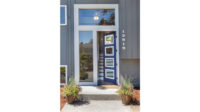As autumn brings sweater weather to much of the United States, thousands of business owners are starting to feel a chill of their own as they size up their winter prospects.
The pandemic has taken a steep toll on restaurants in particular. As much as citizens want get back to dining out, indoor groups still represent a health gamble unprecedented among living Americans. Until the public is adequately protected and the COVID-19 risk is more manageable, consumer confidence will suffer and so will the economy. The next several months look especially perilous for businesses that depend on in-person discretionary spending.
In a world where free appetizers don’t enjoy the pull they once did, what would persuade a larger chunk of a cautious public — one with historically high IAQ awareness — to get out of the house responsibly more often?
New York State of Mind
New York state senator Diane J. Savino and Brandon Patterson, a Mid-Island Assembly candidate, think a COVID-conscious, improved HVAC system could help many residents get over their reservations enough to make reservations.
To that end, they are promoting the idea of interest-free loans, repayable over five years, that small businesses could use to upgrade their HVAC systems.
In New York, home to an early hotspot in the pandemic, restaurant owners are looking to not only overcome customer anxiety but also to meet official guidance. Governor Cuomo’s office has instructed that they must “allow for outside air ventilation” and “should operate with enhanced filtration, ventilation, and purification standards.”
The language is not quite definitive, but nevertheless, that’s what some folks might call an “unfunded mandate.” This kind of financial tool would help. The idea would also surely make sense to business communities and governments in places that did not encounter the virus as early as New York did.
Loans in Action
One can imagine several ways owners could deploy these funds to match their particular circumstance. Ultraviolet lights (in-duct or not), bipolar ionizers, and MERV filters where applicable all can likely create a safer space if implemented properly.
As experts like Engineered Systems columnist Dr. Stephanie Taylor have long advised, maintaining humidification at 40-60% relative humidity will diminish the risk of otherwise dangerous droplets.
Boosting the use of outdoor air — perhaps the most intuitive and effective tactic — might involve new equipment, commonly on the controls side.
Some business may look to improve filtration but then need to review other components, like fans or ductwork, to prevent the overall system from becoming critically imbalanced or stressed by a filtration adjustment.
Results and Other Recipes
A government loan program like this is a good idea. Fiscally, it involves traditional loans, not a PPP-type loan intended to be forgiven without repayment to taxpayers.
Furthermore, while the PPP funds are a temporary fix to battle unemployment through the worst of a crisis, loans for HVAC upgrades pay off in at least three ways: protecting public health, providing almost certain longer-term energy efficiency gains in the vast majority of cases, and supporting a more immediate and much-needed economic recovery.
Meanwhile in Washington, the latest version of House Democrats’ “HEROES Act” includes a Restaurant Revitalization Grants section. That would include 10-year loans at 1% interest and an allowed use for “maintenance” that would seem to cover HVAC upgrades.
ACCA is also promoting extension of an existing tax credit for commercial owners who upgrade to achieve certain HVAC efficiencies. The House recently proposed expanding that credit from $1.80 to $3 per square foot, but its legislative future remains uncertain.
Order Up!
We’re all used to seeing the updates about business closures, but more recently, attention is shifting to the increasing numbers of restaurants that are gone for good. Yelp’s September 2020 Economic Impact Report found that the percentage of now-permanent closures has risen to 61% among restaurants that suspended service since the pandemic began.
While restaurants have taken an especially tough hit, other sectors like beauty-related businesses share similarly increasing rates of no reopening. This loan concept could obviously work for some of those businesses as well.
Experts have long expected a rise in COVID cases as temperatures drop. Incentivizing restaurant ventilation upgrades can improve public safety while helping to keep as much of the economy open as possible. Certain restaurants may even be able to take advantage of temporary suspensions to make such improvements.
We have a short menu of decent legislative ingredients for assisting a sector that Americans might appreciate right about now more than ever. However, the permanent economic damage is accelerating, and the kitchen is only open for so long.








